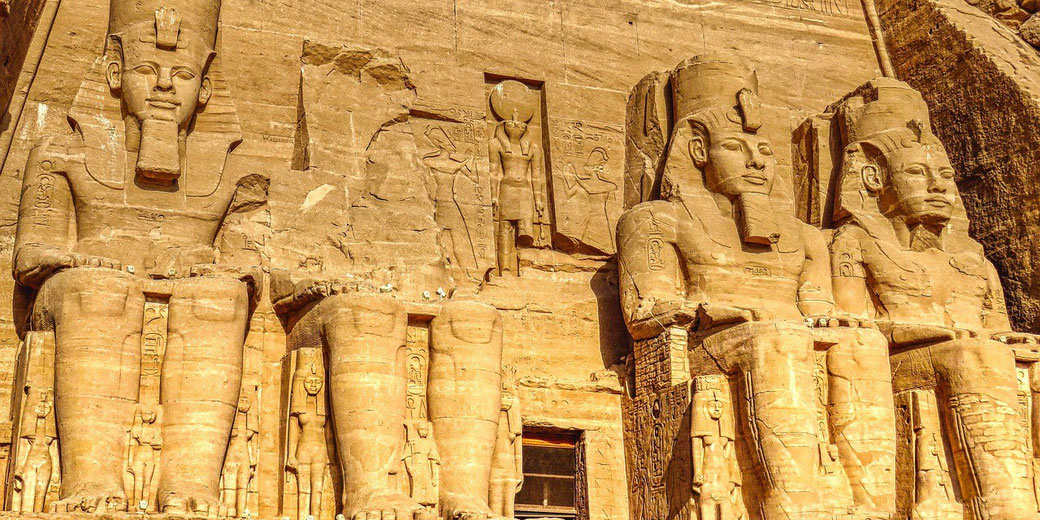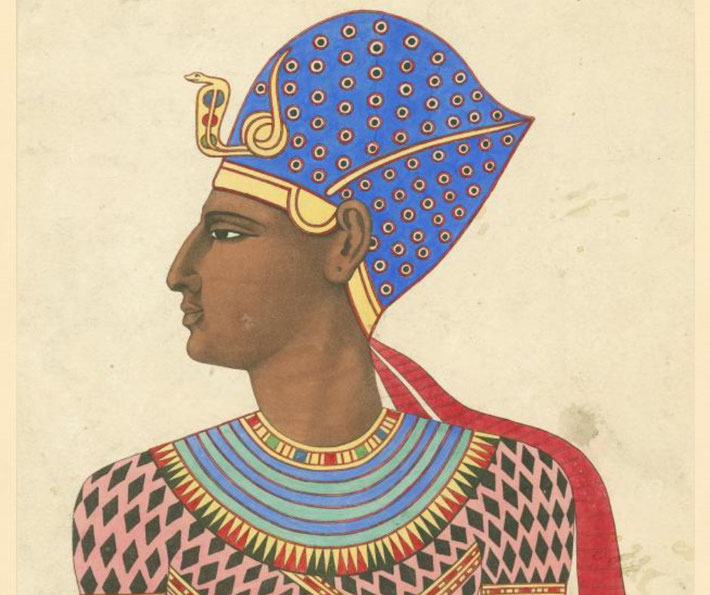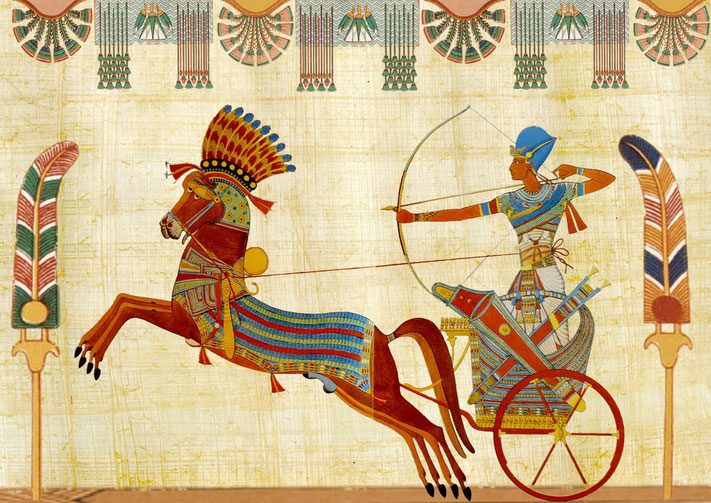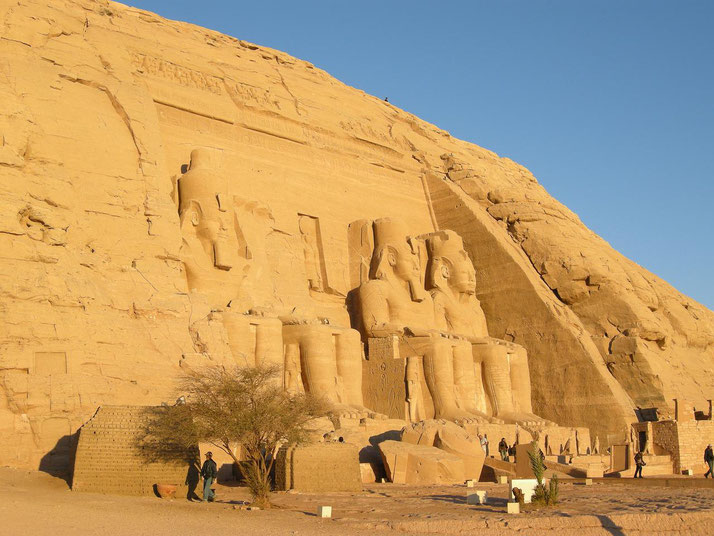What made pharaoh Ramses II 'the Great'?

Among all of the pharaohs who ruled over ancient Egypt in its 3000-year history, none were more powerful and success as Ramses II.
He reigned for an unparalleled 66 years. Ramses' time on the throne would see the unparalleled flourishing of Egyptian culture and transformed the land into a formidable empire through remarkable military campaigns against the Hittites, Libyans, and Nubians.
Furthermore, Ramses II's flurry of building programs were prolific, as he commissioned grand temples, statues, and even founded an entire new city: Per-Ramesses.
But his incredible length of rule would eventually lead to generations of bitter struggle between his descendants.
The troubled world of Egypt during Ramses' childhood
Ramses II was born in 1303 BCE, into a royal family that was already quite powerful.
Hiss mother, Queen Tuya, was a noblewoman of significant influence in the royal court.
Also, his father, pharaoh Seti I, was a great military leader who had conquered many lands during his reign.
However, during Ramses' childhood, Egypt was losing some territories in the north to the rising power of the Hittite empire.
As a result, Egypt had lost many vital trade centers in Syria and Canaan during the reign of the Hittite king, Suppiluliuma I.
Seti I had managed to recover Kadesh in Syria, but then lost it again to the new Hittite king, Muwatalli II.
As Seti knew that his time on the throne was coming to an end, he ensured that Ramses II was trained in the military arts and statecraft from an early age.
He was also given the chance to serve as co-regent of the kingdom with his father from the age of 14.

How did Ramses become pharaoh?
When Seti I died in 1279 BCE, Ramses II was only about 20 years old. As he had been prepared for, he quickly succeeded his father to the throne and became pharaoh of Egypt.
However, the elevation of a new pharaoh was always considered to be an opportunity for kingdoms to try and break free from Egyptian control.
As a result, during his early reign, there were rebellions in Canaan and Libya.
Seeking to capitalize on these struggles, the Hittites became an even bigger threat, as they continued to try and expand their empire by absorbing Egypt's previous allies into their own sphere of influence.
So, in order to protect Egypt's borders, Ramses II needed to build up his army. He did this by conscripting men from all over Egypt and training them to be loyal and disciplined soldiers.
Also, Ramses II actively formed closer alliances with other cities in regions bordering Hittite lands, such as Babylon and Assyria.
He hoped that these alliances would allow him to have a stronger military force that could better strengthen Egypt's borders.
His first military test came during his second year on the throne. Sherden pirates, who were part of the growing Sea Peoples threat, attacked Egyptian cities off the coast of Egypt's Nile Delta.
According to Rameses' own account, he lured them into a trap with a tiny naval force stationed at the mouth of the Nile.
When they were most vulnerable, Ramses then launched a full assault from both sides and sunk their vessels.
This decisive victory demonstrated his military skill and encouraged Egypt's allies that it was still a significant power.
Ramses II's military successes
Inspired by his father's military successes in the Levant, and by the training and experience he had already gained, Ramses II continued to expand Egypt's territory by leading successful campaigns against other neighboring kingdoms.
His most famous battle was fought against the Hittites at Kadesh in 1274 BC.
It is considered to be one of the largest chariot battles in history and involved an estimated 5,000–6,000 chariots.
The battle was claimed as a victory for Ramses II, but it was not a decisive one. In reality, most historians believe it ended in a stalemate for both sides.
After the battle, Ramses II and the Hittite king, Muwatalli II, signed a mutual peace treaty.
The Treaty of Kadesh, as it is now known, was signed in 1258 BC. In fact, it is the earliest known peace treaty in recorded history.
This treaty was designed to be beneficial for both sides, as it allowed them to save face so that neither side was considered to have been 'defeated'.
Regardless, the peace agreement seemed to achieve its aims as the Hittites and the Egyptians would not fight a major war with each other for the rest of Ramses' reign.
Instead, the pharaoh turned his attention to other regions for territorial expansion.
In total, Ramses II conducted 17 military campaigns during his life. The most notable were in Syria and Cannan, where he secured vital trade routes, as well as against the Libyans and Nubians.
In Nubia, Ramses II constructed numerous temples and monuments, including the temple at Beit el-Wali, which commemorates his military victories in the region.
Projects like these were intended to act as visual reminders of the power and influence of Egypt over the defeated territories and dissuade any future revolts.

Why do so many buildings in Egypt bear Ramses' name?
In addition to being a great military leader, Ramses II was also responsible for an incredible number of construction projects.
He is credited with commissioning more statues and monuments than any other pharaoh, which earned him the title 'the Great Builder'.
He ordered the construction of countless temples, palaces, and monuments all over Egypt, many of which can still be seen today.
One of his most famous monuments is the impressive temple at Abu Simbel at the southern border of Egyptian territory.
Its construction took approximately 20 years and was finally completed around 1244 BCE.
Abu Simbel was built in honor of Ramses II's gods, Amun-Ra and Ra-Horakhty, but it was also dedicated to himself and his queen, Nefertari.

At the Egyptian capital city of Thebes, Ramses built his own mortuary temple, known as the Ramesseum.
This was built to provide a place for priests to make offerings to the pharaoh after his death.
It is a large and imposing structure, that was filled with many statues and reliefs of Ramses II himself.
Also, at the eastern edge of the Nile Delta, Ramses also built a brand-new city called Per-Ramesses (meaning 'House of Ramses').
This city was intended to be a new capital of Egypt, and it was here that Ramses II built a massive new palace.
The city was filled with temples, military barracks, and lush gardens. Contemporaries claimed that it was a 'beautiful sight' to see.
On a practical level, Per-Ramesses was primarily intended to be a location from where Ramses could launch large military campaigns, as its close proximity to the Levant meant that it was the perfect location for the pharaoh to quickly respond to regional rebellions.
Nefertari: Ramses' most loved queen
Ramses II appears to have also been a dedicated family man. Even though he married many wives, which was common for Egyptian pharaohs, his favorite wife was Nefertari.
Ramses claimed that she was the most beautiful woman in the kingdom. As far as historians can tell, they seemed to have genuinely loved each other and they had many children together.
In addition, Nefertari had a great influence on Ramses, and she was shown accompanying her husband in Triumph scenes on temple walls.
She even helped him to rule Egypt when he was away on military campaigns.
Upon Nefertari's death, Ramses II was so grief-stricken that he had a temple built in her honor.

Ramses' death and complex legacy
Ramses II would ultimately rule Egypt for 66 years, during which time he was one of the most powerful and impressive pharaohs of ancient Egypt.
When he died in 1213 BC, he was around the age of 90. He was buried in his tomb, now called KV7, in the Valley of the Kings.
By sheer chance, Ramses II’s mummy was discovered in the Deir el-Bahari cache in 1881, along with those of other significant New Kingdom pharaohs.
His body was taken to the Cairo Museum, where it is still on display today. Due to the fame of Ramses II, his mummy has undergone many studies and, as a result, modern historians know a great deal about what he looked like in life.
Studies revealed that he was particularly tall, with a strong, projecting jaw, a thin nose, and thick lips.
However, due to his advanced age, he had dental issues, severe arthritis, and hardened arteries.
Based upon these findings, the most likely cause of death was old age or heart failure.
At the moment of his death, Ramses II’s long reign had made Egypt a powerful and wealthy kingdom.
As a result, many later pharaohs try and emulate his accomplishments. However, none of them would be able to do so.
This is primarily due to the fact that there would be constant struggles for the throne between the many children that Ramses had fathered in his very long lifetime.
Ultimately, Ramses II may have sowed the seeds for the destruction of his own kingdom.
Further reading
What do you need help with?
Download ready-to-use digital learning resources
Copyright © History Skills 2014-2025.
Contact via email
With the exception of links to external sites, some historical sources and extracts from specific publications, all content on this website is copyrighted by History Skills. This content may not be copied, republished or redistributed without written permission from the website creator. Please use the Contact page to obtain relevant permission.





